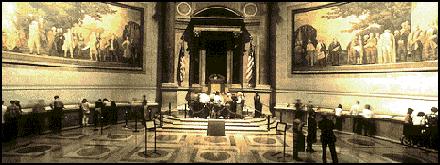About the During the American Revolution, many delegates to the Second Continental Congress were instructed by constituents to argue for the independence of the 13 colonies from Great Britain. On June 7, 1776, Richard Henry Lee called for a resolution of independence. On June 11, John Adams, Benjamin Franklin, Thomas Jefferson, Robert R. Livingston, and Roger Sherman were instructed to draft just such a resolution. The actual writing of the document was entrusted to Thomas Jefferson. Benjamin Franklin, John Adams, and Jefferson then revised the first draft. It was sent to Congress on July 2, 1776. After 2 days of debate and revision, the final draft of the Declaration of Independence was adopted. This represents the formal separation of the American colonies from Great Britain. The Declaration contains a justification for the American Revolution. It is a unique combination of general principles and an abstract theory of government. The fundamental American ideal of government given is based upon the theory of natural rights. The opening paragraphs of the document outline the ‘natural rights’ afforded to all people, calling them ‘self-evident truths,’ and using them to form the basis of a governmental system. The second portion of the document outlines how George III had infringed upon those natural rights to establish a tyranny over the colonies, thereby justifying the American Revolution to the world. The Declaration of Independence, along with the Constitution and the Bill of Rights, is on public display at the Rotunda of the National Archives.
|


